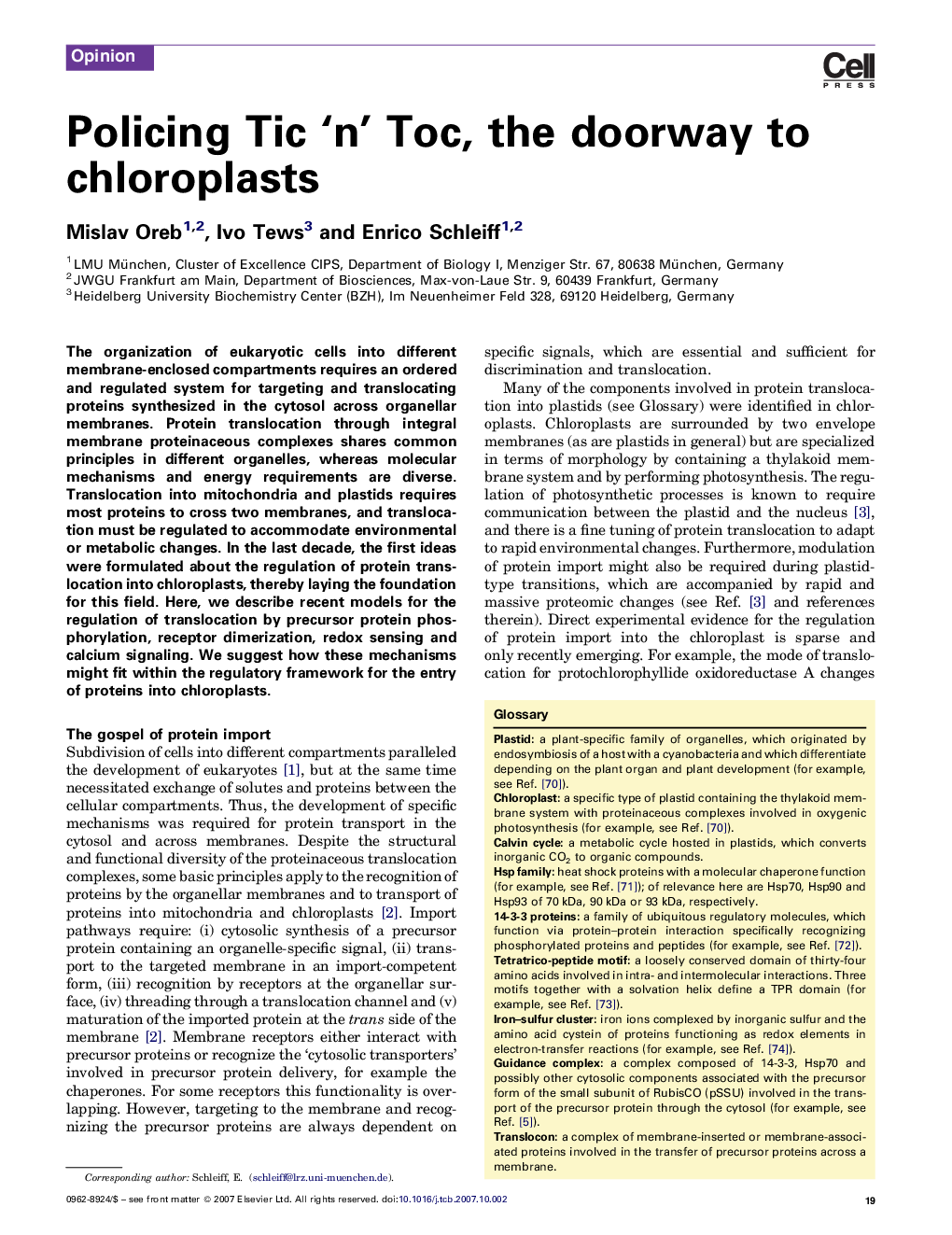| Article ID | Journal | Published Year | Pages | File Type |
|---|---|---|---|---|
| 2204940 | Trends in Cell Biology | 2008 | 9 Pages |
The organization of eukaryotic cells into different membrane-enclosed compartments requires an ordered and regulated system for targeting and translocating proteins synthesized in the cytosol across organellar membranes. Protein translocation through integral membrane proteinaceous complexes shares common principles in different organelles, whereas molecular mechanisms and energy requirements are diverse. Translocation into mitochondria and plastids requires most proteins to cross two membranes, and translocation must be regulated to accommodate environmental or metabolic changes. In the last decade, the first ideas were formulated about the regulation of protein translocation into chloroplasts, thereby laying the foundation for this field. Here, we describe recent models for the regulation of translocation by precursor protein phosphorylation, receptor dimerization, redox sensing and calcium signaling. We suggest how these mechanisms might fit within the regulatory framework for the entry of proteins into chloroplasts.
